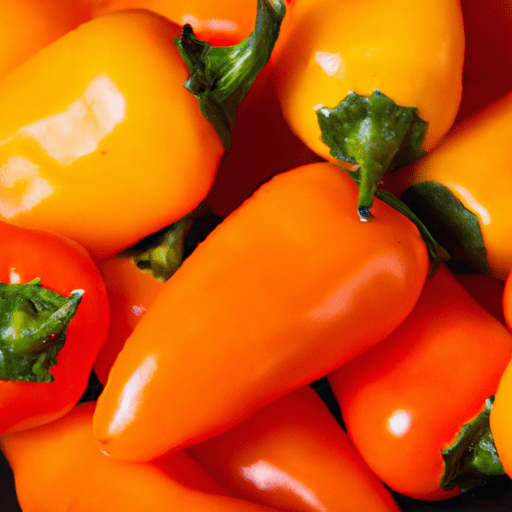Mini Sweet Peppers: Bursting with Flavor and Versatility
If you’re a fan of flavor-packed, vibrant vegetables, then mini sweet peppers are sure to capture your taste buds. These petite and colorful peppers are not only visually appealing but also add a remarkable depth of flavor to a wide array of dishes. In this blog post, we will explore the taste profile, culinary uses, nutritional benefits, and fascinating facts about mini sweet peppers.
Taste Profile
Mini sweet peppers are exactly what their name suggests – sweet! These peppers are the milder and more subtle version of their larger bell pepper relatives. With a crisp and juicy texture, mini sweet peppers deliver a delightful burst of sweetness. Their flavor possess a subtle tang, making them highly enjoyable to snack on raw and perfect for enhancing numerous culinary creations.
Culinary Uses
The culinary versatility of mini sweet peppers is truly remarkable. They can be enjoyed in various ways, adding a touch of sweetness and vibrant colors to your recipes. Here are some popular culinary uses:
1. Appetizers and Snacks
Mini sweet peppers shine as an excellent addition to any appetizer or snack platter. Their petite size and vibrant colors make them visually appealing and inviting. Stuff them with a flavorful mixture of cheese, herbs, and spices to create bite-sized delights. Roasting or grilling the peppers can enhance their natural sweetness and add a smoky undertone.
2. Salads and Salsas
When it comes to salads, mini sweet peppers are a game-changer. Sliced or diced, these peppers provide a pop of color and sweetness to brighten up any salad bowl. Add them to mixed greens, pasta salads, or grain bowls for an extra dose of flavor. They also make a fantastic ingredient for fresh and tangy salsas, pairing well with tomatoes, onions, and cilantro.
3. Stir-Fries and Sautes
In stir-fries and sautes, mini sweet peppers add both flavor and texture. Their vibrant colors bring visual appeal to any dish while their mild sweetness balances out more intense flavors. Sauté them with your favorite vegetables, meats, or tofu to create a colorful medley of flavors.
4. Roasting and Grilling
Roasting or grilling mini sweet peppers enhances their natural sweetness and imparts a charred, smoky flavor. These methods caramelize the sugars present in the peppers, resulting in a delightful taste. Toss them with olive oil, salt, and pepper before placing them under the broiler or on the grill for a delicious side dish or topping for burgers, sandwiches, or pizzas.
Nutritional Benefits
Besides being irresistibly tasty, mini sweet peppers are also packed with valuable nutrients. They are low in calories, an excellent source of vitamins A and C, and provide dietary fiber. Additionally, they contain antioxidants that contribute to overall health and wellbeing. Incorporating mini sweet peppers into your diet can be a fun and nutritious way to elevate your culinary experience.
Fun Facts
Here are some intriguing facts about mini sweet peppers that may surprise you:
- Mini sweet peppers are not a specific pepper variety but rather a size variation of bell peppers. They are usually harvested before they fully mature, resulting in their smaller size.
- The range of colors mini sweet peppers come in is remarkable. From vibrant red, orange, and yellow to deep purple, green, and even chocolate brown, these peppers add a touch of playful elegance to any dish.
- Mini sweet peppers were first introduced to the market in the 1990s and gained popularity rapidly due to their sweet and snackable nature.
Whether you’re a food enthusiast, a health-conscious individual, or simply looking to enhance your culinary creations, mini sweet peppers are a delightful and versatile ingredient to have in your kitchen. Their natural sweetness, vibrant colors, and numerous culinary uses make them a true gem. So, the next time you visit your local farmer’s market or grocery store, don’t forget to grab a bag of these tiny, flavor-packed peppers and let your creativity in the kitchen soar!
Mini Sweet Peppers
Origin: Mini sweet peppers, also known as snack or mini bell peppers, are a hybrid variety derived from bell peppers (Capsicum annuum). The exact origin of this specific variety is unclear, but bell peppers are believed to have originated in Central and South America.
Common Uses: Mini sweet peppers are versatile and can be used in a variety of culinary applications. They are often enjoyed raw as a snack, in salads, and as a colorful addition to crudité platters. They can also be roasted, grilled, stuffed, or added to stir-fries, soups, and sauces to add a sweet and vibrant flavor.
Nutritional Benefits: Mini sweet peppers are low in calories and fat, making them a healthy choice for those watching their weight. They are a good source of vitamins and minerals, including vitamin C, vitamin A, vitamin B6, folate, and potassium. These peppers also provide dietary fiber and antioxidants, which can contribute to overall health and wellbeing.
Unique Properties: Mini sweet peppers are known for their vibrant colors, including yellow, orange, and red. They are typically smaller in size compared to regular bell peppers and have a sweeter flavor profile. They are crunchy and have a thin skin, making them enjoyable to eat raw. Due to their size and sweetness, they are often favored by children and make a popular addition to lunchboxes.
Historical Significance: While mini sweet peppers do not have a specific historical significance, they belong to the Capsicum annuum species, which has a rich history. Bell peppers, the parent variety of mini sweet peppers, have been cultivated for thousands of years. They were domesticated in Central and South America and were eventually introduced to Europe by Christopher Columbus. From there, they spread throughout the world and became an integral part of numerous cuisines globally.




Use the share button below if you liked it.
It makes me smile, when I see it.